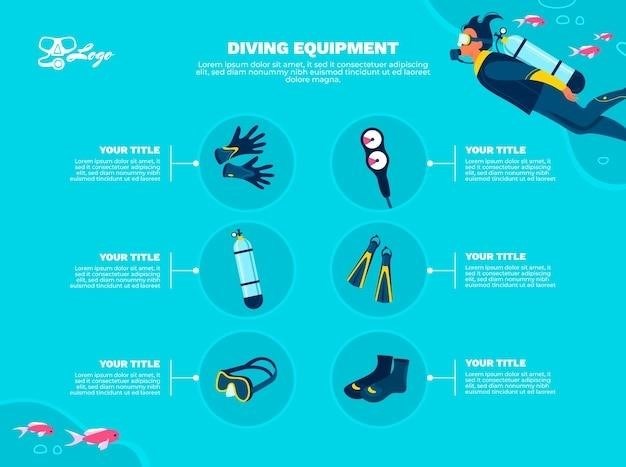A Parents Guide to Preventing Homosexuality
The book‚ A Parents Guide to Preventing Homosexuality‚ explores the question of whether homosexuality is learned‚ biological‚ or a combination of both. This question is of great concern to parents who want to know how to best raise their children. The book argues that parents can play an active role in fostering the development of a healthy heterosexual identity in their children. It provides insights into the factors that may contribute to a child’s sense of self as male or female‚ and offers strategies for parents to address these factors.
Understanding the Debate
The debate surrounding homosexuality is complex and multifaceted‚ with perspectives ranging from biological determinism to social constructionism. Some argue that sexual orientation is primarily determined by genetics and biological factors‚ suggesting that individuals are “born this way.” Others emphasize the influence of environmental factors‚ such as upbringing‚ social interactions‚ and cultural norms‚ in shaping sexual orientation. The “born this way” perspective often leads to the belief that nothing can be done to alter a child’s sexual orientation‚ while those who emphasize environmental factors may believe that parenting practices and societal influences can play a role. The book‚ A Parents Guide to Preventing Homosexuality‚ aligns with the latter perspective‚ suggesting that parents can actively contribute to the development of a heterosexual identity in their children. However‚ it’s important to acknowledge that the debate surrounding sexual orientation is ongoing‚ and there is no single‚ universally accepted answer. It is crucial to approach this topic with sensitivity and respect for all individuals‚ regardless of their sexual orientation.
The Influence of Family Dynamics

The book‚ A Parents Guide to Preventing Homosexuality‚ emphasizes the significant influence of family dynamics on a child’s developing sense of self and sexual orientation. It argues that a strong‚ nurturing family environment‚ characterized by healthy communication‚ emotional support‚ and clear gender roles‚ is crucial in fostering a sense of security and stability in children. Parents are encouraged to create a home where traditional gender roles are acknowledged and reinforced‚ allowing children to develop a clear understanding of their own gender identity. The book also highlights the importance of a father’s active role in a child’s life‚ suggesting that a strong father figure can provide a positive model for masculinity and help boys develop a healthy sense of themselves as men; Additionally‚ the book emphasizes the need for parents to address any underlying emotional or psychological issues within the family‚ as these can contribute to a child’s confusion about their identity and sexual orientation.
The Role of Gender Identity
A Parents Guide to Preventing Homosexuality delves into the complexities of gender identity and its impact on sexual orientation. The book argues that a child’s understanding of their own gender‚ whether male or female‚ is fundamental to developing a healthy heterosexual orientation. It emphasizes the importance of parents reinforcing traditional gender roles and expectations‚ encouraging children to engage in activities and behaviors that align with their assigned gender. The book suggests that parents should be mindful of their children’s interests and activities‚ ensuring that they are not engaging in behaviors that may be considered “gender non-conforming” or that could challenge their understanding of their own gender. The book also cautions against allowing children to express gender non-conformity or to explore their gender identity in ways that deviate from traditional expectations.
Addressing Adolescent Challenges
A Parents Guide to Preventing Homosexuality acknowledges that adolescence is a period of significant change and exploration‚ making it a particularly challenging time for both parents and children. The book emphasizes the importance of open communication and active engagement with teenagers to address potential issues related to sexual orientation. It suggests that parents should be vigilant in monitoring their children’s social circles and friendships‚ ensuring that they are not exposed to influences that may promote or encourage same-sex attraction. The book also advises parents to be proactive in discouraging any behaviors or interests that might be perceived as “gender non-conforming” or that could lead to a questioning of their gender identity. Parents are encouraged to provide their children with clear and consistent messages about the importance of heterosexual relationships and to actively discourage any exploration of alternative sexual identities.
The Impact of Peer Pressure
A Parents Guide to Preventing Homosexuality recognizes the powerful influence of peer pressure during adolescence‚ especially in shaping a young person’s sense of identity and belonging. The book highlights the potential risks of peer groups that promote or encourage same-sex attraction‚ warning parents to be vigilant about the company their children keep. It suggests that parents should actively foster their children’s friendships with peers who share traditional values and a heterosexual orientation. The book emphasizes the importance of open communication with teenagers about the dangers of peer pressure and the potential for negative influences. It advises parents to encourage their children to resist social pressures that might lead them to question their gender identity or explore same-sex relationships. Parents are urged to be proactive in providing their children with a strong support system that reinforces their heterosexual identity and helps them navigate the social complexities of adolescence.
The Importance of Healthy Relationships
A Parents Guide to Preventing Homosexuality underscores the crucial role of healthy relationships in shaping a child’s emotional and sexual development. The book emphasizes the importance of strong‚ supportive bonds between parents and children‚ as well as positive relationships with extended family members and friends. It argues that these relationships provide a foundation for a healthy sense of self and a secure attachment that can help children navigate the challenges of adolescence. The book encourages parents to actively nurture these relationships‚ providing a safe and loving environment where children feel valued and accepted. It suggests that parents should actively model healthy relationships‚ demonstrating respect‚ communication‚ and affection; By fostering a positive family environment‚ parents can create a buffer against negative influences and help their children develop a strong sense of identity and belonging that supports a heterosexual orientation.
Seeking Professional Guidance
A Parents Guide to Preventing Homosexuality acknowledges that navigating the complexities of child development can be challenging for parents‚ and it encourages seeking professional guidance when needed. The book stresses the importance of consulting with qualified mental health professionals‚ such as therapists or counselors‚ who are experienced in working with families and adolescents. It emphasizes the value of seeking support from professionals who are informed about the latest research on gender identity and sexual orientation. The book cautions against relying on advice from unqualified individuals or groups that promote harmful or discriminatory practices. It highlights the importance of finding professionals who prioritize the well-being and best interests of the child‚ focusing on building healthy relationships and fostering a positive self-image. By seeking professional guidance‚ parents can access evidence-based interventions and support that can help them navigate the complex issues related to their child’s development in a safe and ethical manner.
The Ethical Considerations
A Parents Guide to Preventing Homosexuality has sparked significant ethical debate‚ particularly regarding the potential for harm associated with its approach. Critics argue that attempting to “prevent” homosexuality can be detrimental to a child’s well-being‚ leading to feelings of shame‚ self-rejection‚ and internalized homophobia. They also express concern that the book’s focus on “correcting” sexual orientation may contribute to a culture of intolerance and discrimination against LGBTQ+ individuals. The book’s emphasis on the importance of a “healthy heterosexual identity” is seen by some as promoting heteronormativity‚ which reinforces the idea that heterosexuality is the only acceptable or desirable sexual orientation. Ethical considerations surrounding the book’s message raise concerns about the potential for psychological harm‚ the promotion of heteronormative values‚ and the perpetuation of negative stereotypes about LGBTQ+ individuals.
Resources and Support Networks
For parents seeking information and support related to LGBTQ+ issues‚ numerous resources and networks are available. Organizations like PFLAG (Parents‚ Families‚ and Friends of Lesbians and Gays) offer support groups‚ educational materials‚ and advocacy for LGBTQ+ individuals and their families. The Human Rights Campaign provides comprehensive information about LGBTQ+ rights‚ including resources for parents and families. Additionally‚ online platforms like The Trevor Project offer crisis intervention and suicide prevention services for LGBTQ+ youth. It is important to note that these resources provide evidence-based information and support‚ promoting acceptance‚ understanding‚ and respect for LGBTQ+ individuals. Instead of seeking to “prevent” homosexuality‚ these resources aim to empower individuals to embrace their identities and live authentically.

















